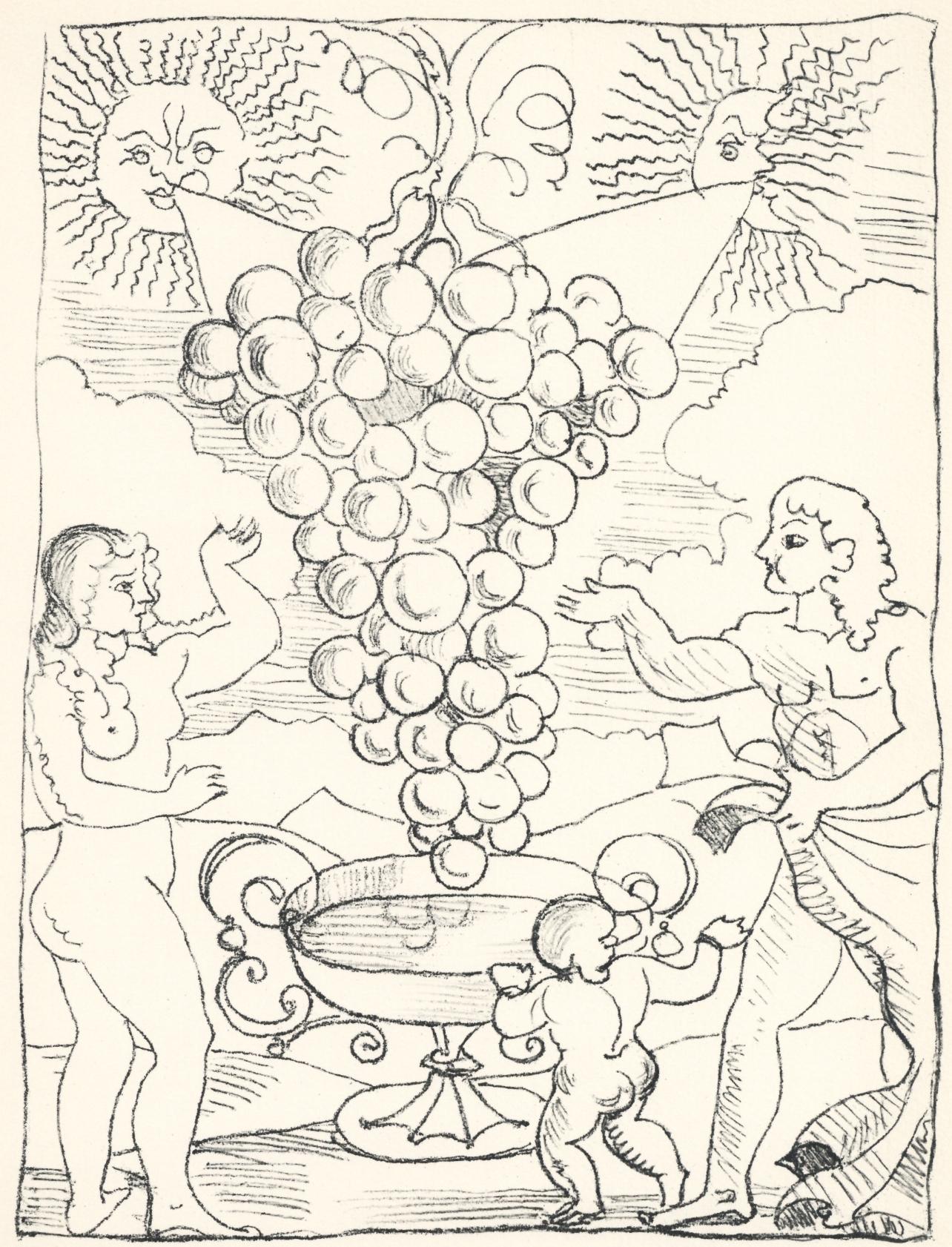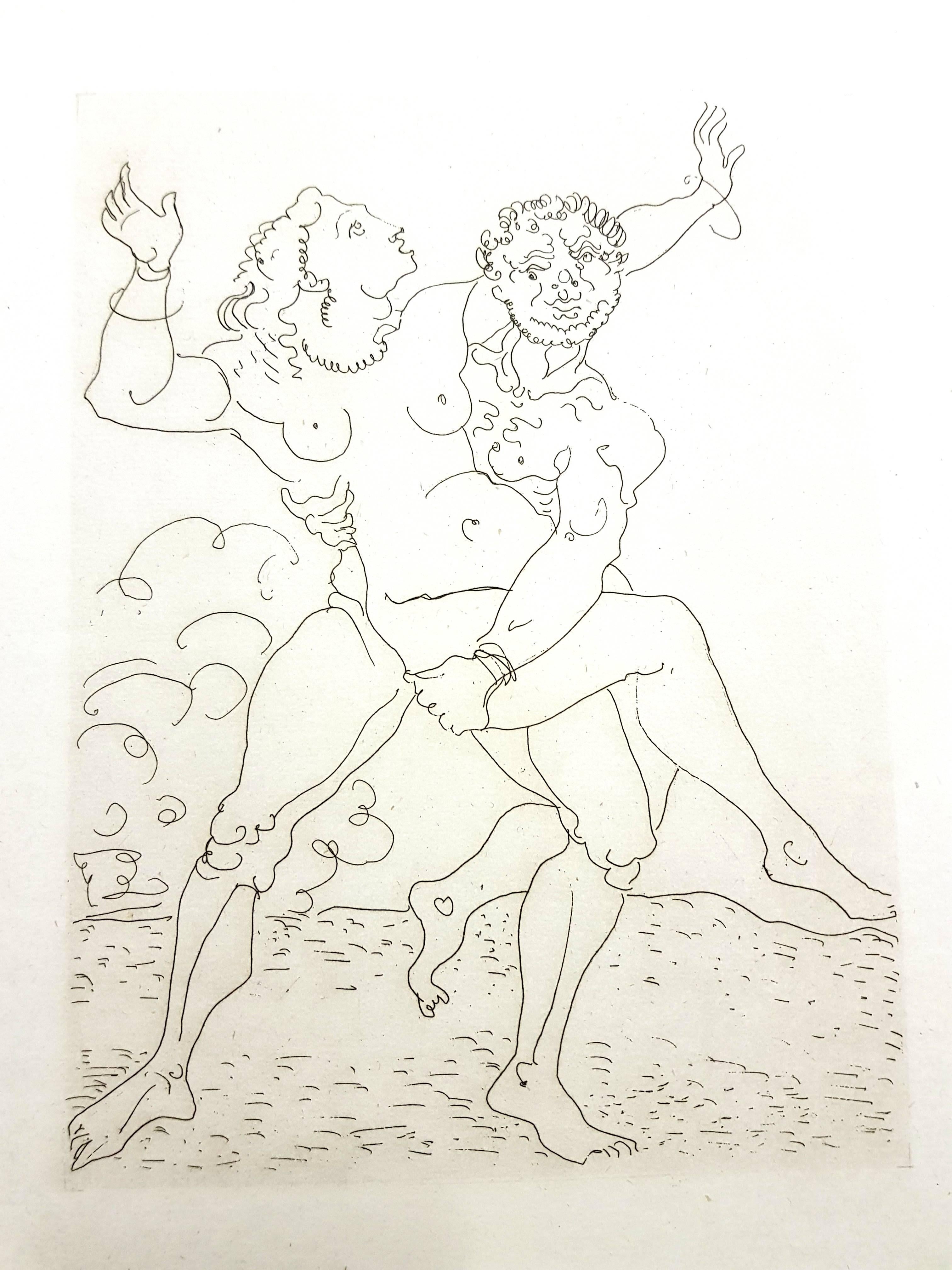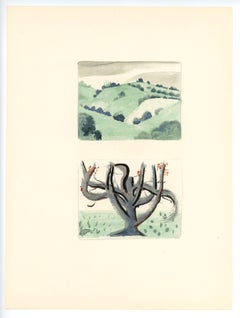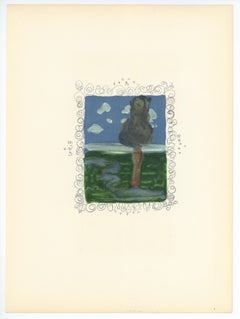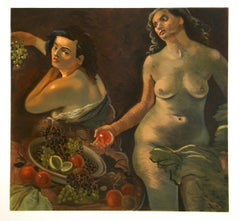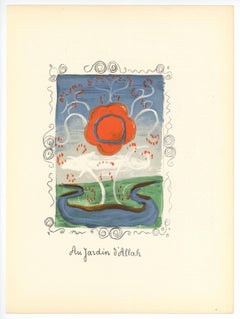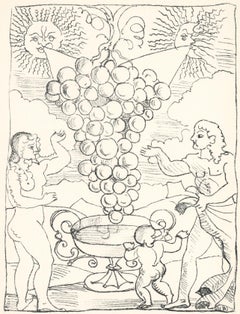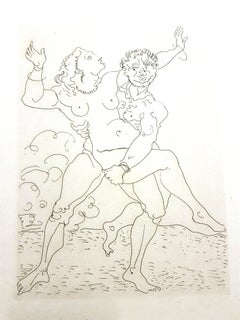Items Similar to "Age d'or et Terre promise" lithograph
Want more images or videos?
Request additional images or videos from the seller
1 of 2
(after) André Derain"Age d'or et Terre promise" lithograph1956
1956
$100
£77.05
€88.01
CA$143.17
A$156.15
CHF 82.10
MX$1,873.90
NOK 1,036.65
SEK 966.91
DKK 657.32
About the Item
Medium: lithograph (after the drawing). Printed on Arches paper in 1956 at the atelier Daniel Jacomet for the Vins, fleurs et flammes portfolio, and issued in a limited edition of 380. Size: 12 3/4 x 10 inches (324 x 250 mm). Not signed.
- Creator:(after) André Derain (1880 - 1954, French)
- Creation Year:1956
- Dimensions:Height: 12.76 in (32.4 cm)Width: 9.85 in (25 cm)
- Medium:
- Period:
- Condition:
- Gallery Location:Henderson, NV
- Reference Number:1stDibs: LU2365212675232
About the Seller
5.0
Platinum Seller
Premium sellers with a 4.7+ rating and 24-hour response times
Established in 2006
1stDibs seller since 2023
577 sales on 1stDibs
Typical response time: 3 hours
- ShippingRetrieving quote...Shipping from: Henderson, NV
- Return Policy
More From This Seller
View All"In the Garden of Allah" lithograph
By (after) André Derain
Located in Henderson, NV
Medium: lithograph. Printed in 1939 and published in Paris by Teriade for the art revue Verve (Volume 1, Number 4). The image measures 8 1/4 x 4 3/4 inches (210 x 122 mm); the full s...
Category
1930s Fauvist Prints and Multiples
Materials
Lithograph
"In the Garden of Allah" lithograph
By (after) André Derain
Located in Henderson, NV
Medium: lithograph. Printed in 1939 and published in Paris by Teriade for the art revue Verve (volume 1, number 4). Image size: 6 1/4 x 5 1/2 inches (160 x 140 mm). Sheet size: 14 x ...
Category
1930s Fauvist Prints and Multiples
Materials
Lithograph
"Deux femmes nues et nature morte" lithograph
By (after) André Derain
Located in Henderson, NV
Medium: lithograph (after the 1935 Andre Derain painting). Printed in Paris on Arches paper at the Mourlot studio in 1970 in an edition of 1000 for the Collection Pierre Lévy deluxe ...
Category
1970s Fauvist Prints and Multiples
Materials
Lithograph
"In the Garden of Allah" lithograph
By (after) André Derain
Located in Henderson, NV
Medium: lithograph. Printed in 1939 and published in Paris by Teriade for the art revue Verve (volume 1, number 4). Image size: 9 x 6 1/4 inches (230 x 155 mm). Sheet size: 14 x 10 1...
Category
1930s Fauvist Prints and Multiples
Materials
Lithograph
"Portrait" lithograph
By (after) André Derain
Located in Henderson, NV
Medium: lithograph. Medium: lithograph. Printed in 1939 by Mourlot Freres and published by Teriade for Verve (Volume 1, Number 5-6). Size: 13 3/4 x 10 1/8 inches (347 x 257 mm). Ther...
Category
1930s Fauvist Prints and Multiples
Materials
Lithograph
"Les deux hangars" lithograph
By (after) André Derain
Located in Henderson, NV
Medium: lithograph (after the 1947 Andre Derain painting). Printed in Paris on Arches paper at the Mourlot studio in 1970 in an edition of 1000 for the Collection Pierre Lévy deluxe ...
Category
1970s Fauvist Prints and Multiples
Materials
Lithograph
You May Also Like
Andre Derain, Golden Age and Promised Land, 1956 (after)
By André Derain
Located in Southampton, NY
This exquisite lithograph after Andre Derain (1880–1954), titled Age d'or et Terre promise (Golden Age and Promised Land), from the folio Vins, Fleurs et Flammes (Wines, Flowers, and...
Category
1950s Modern Landscape Prints
Materials
Lithograph, Stencil
Etching from Le Satyricon
By André Derain
Located in Surfside, FL
This lot is for one etching.
---
Derain was born in 1880 in Chatou, Yvelines, Île-de-France, just outside Paris. In 1895 Derain began to study on his own, contrary to claims that mee...
Category
20th Century Figurative Prints
Materials
Etching
André Derain - Ovid's Heroides - Original Etching
By André Derain
Located in Collonge Bellerive, Geneve, CH
André Derain - Ovid's Heroides
Original Etching
Edition of 134
Dimensions: 32 x 25 cm
Ovide [Marcel Prevost], Héroïdes, Paris, Société des Cent-une, 1938
Andre Derain was born in 1880 in Chatou, an artist colony outside Paris. In 1898, he enrolled in the Academie Carriere in Paris where he met Matisse. He attended art school and in 1900, set up a studio with Maurice deVlaminck. After his military service from 1900-1904, Derain exhibited his work at the Salon des Independants and then at the Salon d'Automne with Matisse, Vlaminck and others, thus creating the movement of Fauvism.He worked with Henri Matisse in 1905 at Collioure, and participated in the 1905 Salon d’Automne with Matisse, Vlaminck, and Braque, the exhibition in which this group was labeled as Fauves, or Wild Beasts. Along with Vlaminck, Derain was one of the first artists to collect the tribal art of Africa which was influential to many of the artists of the early 20th century.
In 1906, Derain met Picasso and his dealer, who purchased Derain's entire studio, creating newfound financial success. During this time, he was hired for the illustrations for works by Guillaume Apollinaire and Andre Breton. After World War I, his friend's Cubism movement affected his art, along with influence from Classicism and African Art.
Derain stayed in Paris during most of the Occupation, where he was esteemed by the Nazis because of his artistic integrity. Hitler's Foreign Minister commissioned him to paint a family portrait, but he politely refused. His popularity began to decline after the war because of disagreement over new artistic movements. He later lost most of his eyesight due to illness, which may have been the reason he was hit by a truck in 1954, dying from shock at the age of 74.
Derain’s Fauve paintings are typically bright with intense color. Influenced by the work of Cézanne as well as the early Cubist paintings of Picasso and Braque’s, Derain’s style changed and by 1912, the paintings became more traditional and structured. For the remainder of his career, he continued to investigate different compositional methods including the perspective of Cézanne and the pointillism of Seurat. He also designed ballet sets and made a number of sculptures.
At the turn of the century, Andre Derain exhibited at the radical Fauve Salon d’Automne (1905) and was one of the founding members of the Fauvist movement together with his life-long friends Matisse and Vlaminck. The works he produced in this period, often under the guidance of Matisse, have been counted among the masterpieces of Fauvism.
From around 1918, Derain turned his back on the avant-garde and had begun to explore some of the more traditional genres of Western art, including landscapes. His main source of inspiration once the Fauves group had dispersed was found in the Louvre, where he admired the early Renaissance works in particular. Talking of his frequent visits there, he once said, ‘That seemed to me then, the true, pure absolute painting.’ His work evolved through many styles and, most significantly, turned back to the past, particularly after 1922 when Lenin had publicly pronounced his disdain for abstract art.
Derain built up an immense and fascinating collection of paintings, sculpture and objets d’art throughout his life which aided his experimentation and was reflected in his work between 1930 and 1945. During these years, his painting technique displayed the most avenues of invention, using a repertoire of primitivist motifs. His eclectic collection was constantly changing. In 1930 he sold his African collection in exchange for bronzes of antiquity and the Renaissance which indicated a real change of interest in the objects, as did his later pursuit of Greek ceramic painting and his enthusiasm for grand cycles of literary and antique themes...
Category
1930s Modern Nude Prints
Materials
Etching
Etching from Le Satyricon
By André Derain
Located in Surfside, FL
This lot is for one etching.
---
Derain was born in 1880 in Chatou, Yvelines, Île-de-France, just outside Paris. In 1895 Derain began to study on his own, contrary to claims that mee...
Category
20th Century Figurative Prints
Materials
Etching
Etching from Le Satyricon
By André Derain
Located in Surfside, FL
This lot is for one etching.
---
Derain was born in 1880 in Chatou, Yvelines, Île-de-France, just outside Paris. In 1895 Derain began to study on his own, contrary to claims that mee...
Category
20th Century Figurative Prints
Materials
Etching
Etching from Le Satyricon
By André Derain
Located in Surfside, FL
This lot is for one etching.
---
Derain was born in 1880 in Chatou, Yvelines, Île-de-France, just outside Paris. In 1895 Derain began to study on his own, contrary to claims that mee...
Category
20th Century Figurative Prints
Materials
Etching
More Ways To Browse
Modigliani Prints
Original Louis Icart
Original Ww1 Poster
Peter Max Heart
Picasso 1958
Pierre Vincent
Piranesi Veduta Di Roma Etching
Retro Sci Fi Art
Robert Sayer
Rufino Tamayo Lithograph
Supreme Skateboard
The Dinner Party
The Gates Central Park
Vintage Apple Computer
Vintage Art Deco Artwork
Vintage Constellation Print
Vintage Gravestones
Vintage Heron Prints
